Earlier this year, I wrote the blog, Hitler’s Enablers – Part One – Wannsee Conference. Click here to read the blog. The blog primarily dealt with the first and second level of enablers ⏤ senior Nazi leaders setting policy and leaving the formation of details and final implementation to the second layer. An “enabler” is someone who enables another to achieve an end.
Today, we will examine the third level of enablers. These were the men and women who were responsible for the administration and ultimately, ensuring the end result met senior Nazi leaders’ expectations. In other words, these were the people who carried out the day-to-day activities that ultimately resulted in the murder of millions of men, women, and children. Beginning with arrests and ending with the wholesale exterminations in the gas chambers, Hitler would not have been able to carry out his perverse vision without the assistance of hundreds of thousands of third level enablers.
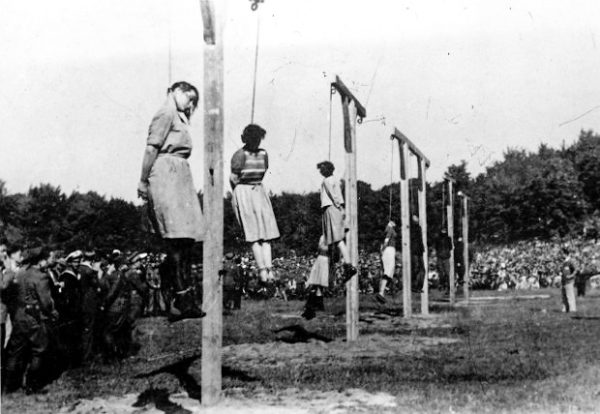
As we will see, most of these people were sadistic thugs who had no compassion for other human beings. Many of the defendants could not comprehend why they were on trial after the war. The common defense position taken by Nazi war criminals was that they were only following orders ⏤ all fingers pointed to Adolf Hitler ⏤ and when that didn’t work, they boiled it down to “Victor’s Justice.”
Did You Know?
Did you know that Magda Fontanges (1905-1960) was Mussolini’s mistress? I mean really, who wasn’t his mistress back then? Magda, a French citizen, was an actor, journalist, and I suppose, kind of a kook. She was also Hèléne, German agent 8608, between 1940 and 1943. Before she was a Nazi spy, Magda was found guilty in 1937 of the attempted assassination of Count Charles de Chambrun, the French Ambassador to Italy. It was a revenge attack for Chambrun having ruined her love affair with the Duce (at least that was her defense). Hèléne set up an intelligence network for the Germans and participated in several missions. One of the missions she refused to go on was to Italy to spy on Mussolini and his reported surrender discussions with the Allies. After the war, Magda was tried on the charge of “intelligence with the enemy.” Found guilty, Magda was sentenced to “national indignity” for life, exiled from Paris, and she could not live in any large French town for twenty years. Between 1948 and 1952, Magda was imprisoned but finally released on house arrest in Mauzac. She violated that requirement by moving back to Paris where she was immediately arrested for parole violations. They threw her in La Roquette prison (women’s prison in Paris) and by 1955, Magda was once again released. Later in the year, she stole a painting from her attorney. Five years later, Magda was found dead in Geneva from an overdose of sleeping pills.
Her comment after the post-war trial was, “My only regret is that I wasn’t hanged with the Duce instead of his last mistress, Clara Petacci.”
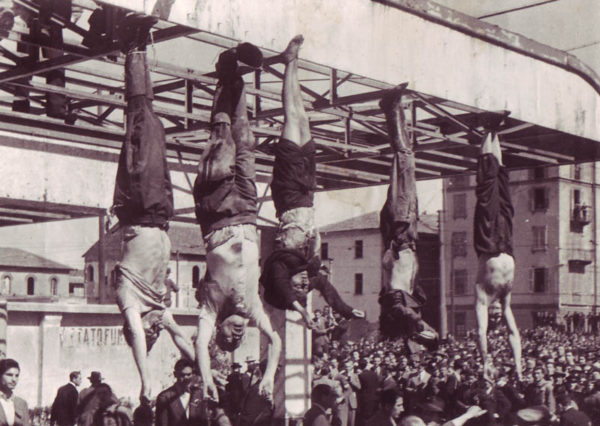
SS Economic and Administrative Main Office
This administrative unit was one of the most powerful groups in the Third Reich ⏤ it controlled the Schutzstaffel (SS) purse strings. The SS Wirtschafts und Verwaltungshauptamt, or SS-WVHA managed the Nazis’ finances, supply systems, and business projects including the Konzentrationslager (KZ/KL), or concentration camps. The WVHA was at the core of the Final Solution’s implementation.
SS-Obergruppenführer Oswald Pohl (1892-1951) was in charge of the WVHA making him the third most powerful man in the SS ⏤ behind Himmler and Reinhard Heydrich. Pohl’s responsibilities were administration, business, budgets, and buildings. His primary objectives were to run his operations as efficiently as possible and maximize the economic value of concentration camp inmates whether it was through forced labor or collecting valuables taken from prisoners selected for immediate extermination. Pohl lived and worked near the KZ Dachau concentration camp and he would visit the camp frequently. He became very familiar with the operations of a Nazi concentration camp and by 1938, the WVHA had taken over the responsibility for running the camps using the SS-Totenkopfverbände, or SS-Death’s Head Units as the guards (more than 37,000 male guards).
By the late 1930s, Himmler was beginning to expand the SS economy. He began establishing various enterprises such as cement factories, stone quarries, fish processing, and brick factories among other money making ventures. The foundation of all these operations was slave labor ⏤ concentration camp inmates. For a daily fee, the SS leased its prisoners to industrial companies such as BMW, IG Farben, Heinkel, and Krupp Steel.
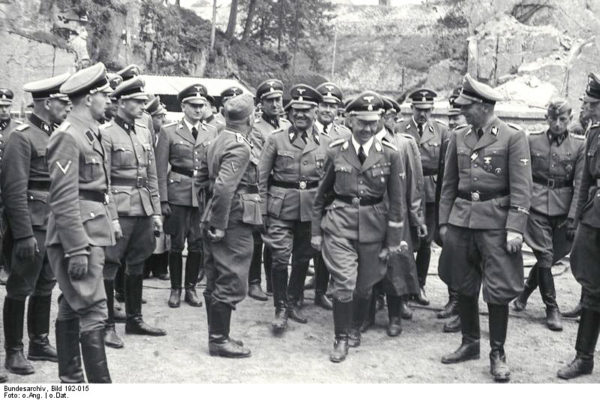
Pohl began building concentration camps near resources that could be monetized by the Nazis. KZ Flossenbürg and KZ Mauthausen were built near quarries of blue-gray granite. Inmates from KZ Buchenwald and KZ Sachsenhausen were used in nearby brick works. A third Auschwitz camp (KZ Auschwitz III – Monowitz) was built to supply labor to the local IG Farben synthetic rubber facility.
By early summer 1942, two events accelerated the development and use of the extermination camps: Adolf Eichmann’s implementation of the Final Solution and the assassination of SS-Obergruppenführer Reinhard Heydrich, leader of the Reichssicherheitshaupamt (RSHA), or Nazi security forces. Pohl and WVHA were in charge of building, financing, and staffing of the camps. He began to overhaul the existing camps in April 1942 when he hosted an inaugural conference with camp commandants. By October, all but four of the camps had new commanders. One of the biggest changes Pohl brought about was to squeeze as much out of each camp in terms of economic benefits. Higher expectations resulted in even harsher conditions for the inmates. Pohl initiated the rotation of the camps’ staff. He wanted to disrupt the set routines and cliques within the camps. Death squads were broken up and moved around ⏤ the exception being the “specialists” in torture and death.
Camp Commandants
The four camps that kept their commanders were Buchenwald (Hermann Pister), Mauthausen (Franz Ziereis), Auschwitz (Rudolf Höss), and KZ Niederhagen (Adolf Haas). Newly appointed KZ commanders included Fritz Suhren (KZ Ravensbrück), Anton Kaindl (KZ Sachsenhausen), Paul Werner Hoppe (KZ Stutthof), and Josef Kramer (KZ Natzweiler-Struthof). At his trial, Pohl stated he made the changes in order to inject a more humane approach to the camps. In reality, he got rid of the drunks, thieves, and deadbeat commanders and replaced them with efficient murderers.
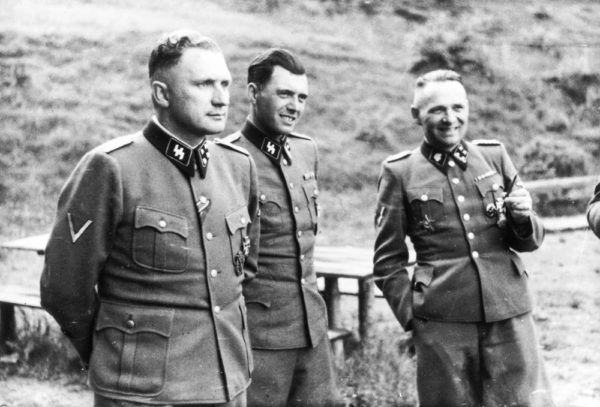
SS-Obersturmbannführer Rudolf Höss (1901-1947) was the commandant of Auschwitz between May 1940 and November 1943 and then again, May 1944 to January 1945. Höss introduced the use of Zyklon B as a means of poisoning the arriving deportees in the gas chambers. When Höss returned to Auschwitz in May 1944, it was to oversee the execution of 430,000 Hungarian Jews. Conducted over a fifty-six-day period, this became known as “Operation Höss” and contributed to the evidence that eventually earned him the death sentence. Höss was hanged in Auschwitz near the crematorium.


Probably the most respected camp commander during pre-war years was SS-Standartenführer Karl Otto Koch (1897-1945). His position was commandant of Sachsenhausen. During this time, he married his second wife, Ilse Koch. Within a year, Koch was given command of Buchenwald where he was known to be a cruel commandant and unforgiving superior. In 1945, a former prisoner could not describe which of Koch’s traits was worse, “his sadism, his brutality, his perversity, or his corruption.” He rode his men as being lazy, stupid, and useless. Punishment was always omnipresent for both prisoner and SS guard. Koch was eventually arrested for fraud, corruption, embezzlement, drunkenness, and other offenses. He was transferred to KZ Majdanek where eighty-nine prisoners escaped under his watch. Koch’s actions eventually caught up to him and Himmler had Koch and his wife brought up on corruption charges. While she was acquitted, Koch was found guilty and weeks before the war ended, he was executed by a SS firing squad at Buchenwald.
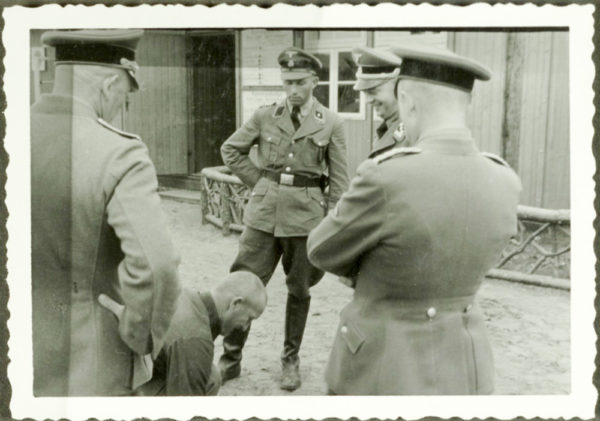
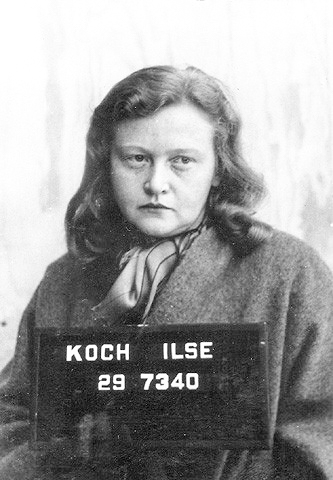
SS-Sturmbannführer Fritz Suhren (1908-1950) was the deputy commandant of Sachsenhausen before his promotion to commandant of Ravensbrück in the summer of 1942. He preferred to work his prisoners to death as opposed to outright execution (although that was not always out of the question). One of his responsibilities was providing inmates to the medical staff for experimentation. These women included Polish inmates who became known as “The Rabbits of Ravensbrück.” Click here to read the blog. Suhren escaped to Bavaria where he lived until his former secretary recognized him. Tried in Rastatt, Germany⏤part of the French Zone⏤Suhren was convicted, and sentenced to death. The former Ravensbrück commandant was executed by firing squad in 1950.
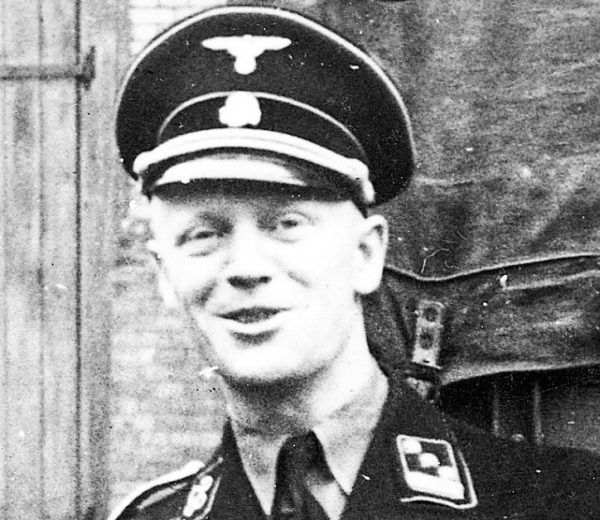
SS-Hauptsturmführer Josef Kramer (1906-1945) was known as the “Beast of Belsen.” His assignments as commandant included Natzweiler-Struthof (1941), Auschwitz-Birkenau (1944), and KZ Bergen-Belson (1945). While at Naztweiler (the only concentration camp on French soil), Kramer was responsible for the gassing of eighty-six Jewish prisoners. He personally administered the prussic acid and then watched the victims die. The corpses were transferred to the Anatomical Institute in Strasbourg where they were preserved for the Nazis’ skeleton collection. Under his command at Bergen-Belson (average capacity: 45,500), 18,168 prisoners lost their lives in one month including Anne Frank and her sister. When the British showed up on 15 April 1945, they were met by Kramer at the gates of the camp. He was arrested by Sergeant Norman Turgel who said after the war, “I was very proud of being a Jew who arrested one of the most notorious gangsters in Nazi Germany.” Kramer was tried in the first Belsen trial and hanged on 13 December 1945 along with ten other camp personnel including Irma Grese, a female guard.
Female Camp Guards
Although female camp guards (SS-Aufseherinnen) only worked at the camps where women were incarcerated, they were some of the most vicious and sadistic guards employed by the SS. It is estimated that more than 3,500 female camp guards were interspersed among the thirteen camps that held women (Ravensbrück was the only camp exclusively used for women and the female guards were in the majority). While the Aufseherinnen came under the jurisdiction of the SS, they were never granted official SS status. Reporting directly to the camp commander, the Aufseherinnen took part in most of the activities their male counterparts were involved in with the exception of mass killings (i.e., gassings or mass shootings). However, they participated in the sorting process and guarded the inmates outside the gas chambers.
The SS wanted women between the ages of twenty-one and forty-five. They preferred the ideal candidate to be single, no professional skills were necessary, and education did not matter. Most of the guards came from lower class families and had very little formal education. Many of the women volunteered for the SS out of dissatisfaction for their jobs and because the Nazis offered job security and decent wages. Most of the newly hired guards began their training at Ravensbrück. From there, they were assigned to one of the other twelve camps that held women prisoners. Their daily responsibilities included roll calls, organizing the prisoners into kommandos, or work details, and direct supervision of the inmates in the barracks and at work.
New guards came into the camps frightened, shocked, and clumsy. According to Germaine Tillion, a former Ravensbrück prisoner, “The beginners usually appeared frightened upon first contact with the camp, and it took some time to attain the level of cruelty and debauchery of their seniors.” Once acclimated, the new guard began the verbal abuse and physical violence on the prisoners. How did these young women turn into sadists and thugs? I suppose it starts with having power and control. Someone is given a perceived important position, gets to wear a uniform (they were not allowed to wear SS symbols such as the death’s head or runes), and most importantly, their actions are condoned and even encouraged by superiors. According to the testimony of former guards after the war, it was a lifestyle the women had never experienced ⏤ they enjoyed it ⏤ they had the power over who lived and who died.
Despite Himmler’s orders against gratuitous violence, this did not stop the sadistic guards (men or women) from carrying out physical maltreatment on the prisoners. Steel-studded jackboots, whips, and sticks were some of the weapons of choice used by the guards. Hermaine Braunsteiner (1919-1999) was notorious for her violent treatment of the inmates. Braumsteiner was known as the Kobykla, or “The Stomping Mare” because she liked to kick prisoners to death.
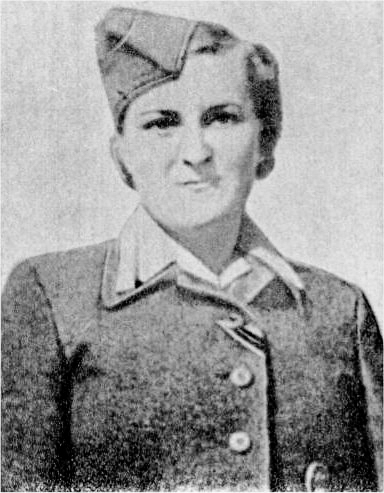
Ilse Koch (1906-1967), wife of the Buchenwald commandant, reportedly had lampshades made out of human skin that displayed tattoos (I saw two of the lampshades in 1967). Known as the “Bitch of Buchenwald,” Koch was ultimately tried for war crimes and sentenced to life imprisonment in 1951. While in prison, Koch committed suicide. Watch a video on Ilse Koch here.
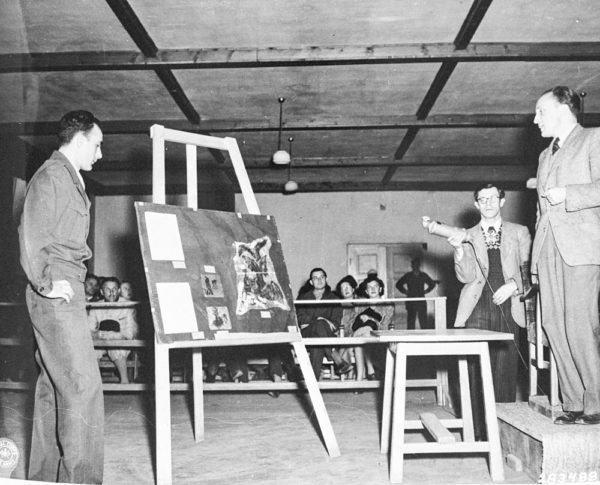
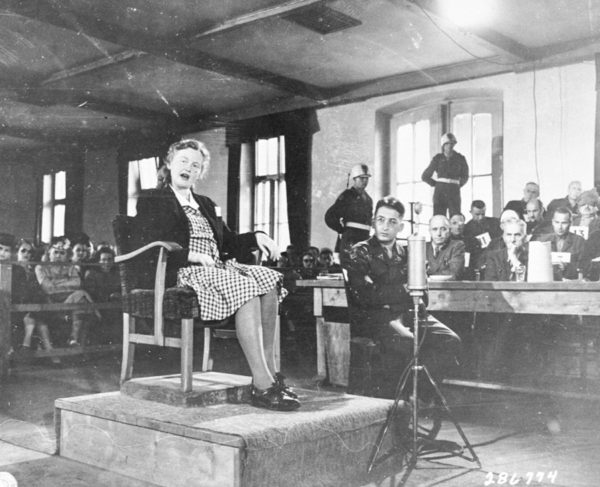
One of the most infamous guards, Irma Grese (1923-1945) was a guard at Auschwitz where she was known as “The Hyena of Auschwitz.” Her responsibilities included participating in the selection process of arriving prisoners for either labor details or immediate execution in the gas chamber. Grese was transferred to Bergen-Belson in early 1945 where she served as warden of the women’s section. Witnesses at her trial told about how she beat prisoners with braided whips. Grese was found guilty and sentenced to hang. Watch a video on Irma Grese here.
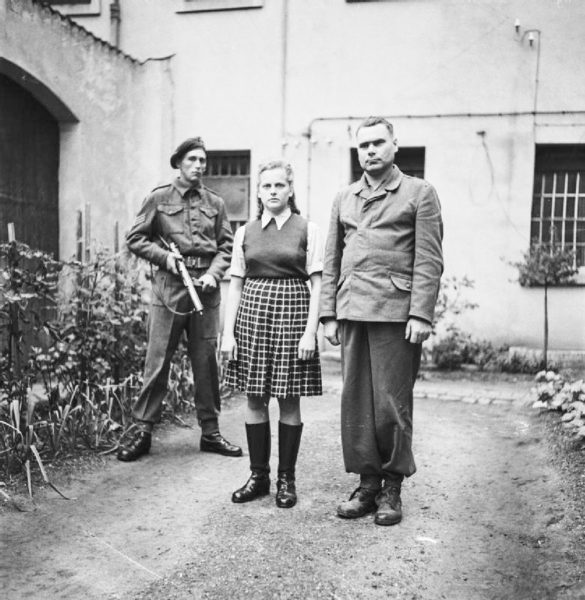
Maria Mandl (1912-1948) was the top ranking female official at Auschwitz-Birkenau. During her trial, evidence was presented directly linking her to more than 500,000 deaths. She was known as “The Beast” and responsible for beatings, death selections, and ordering the execution of anyone who looked directly at her. She was the first condemned defendant from the Auschwitz trial to hang on 24 January 1948 at Montelupich prison in Krakow, Poland. Watch a video on Maria Mandl here.
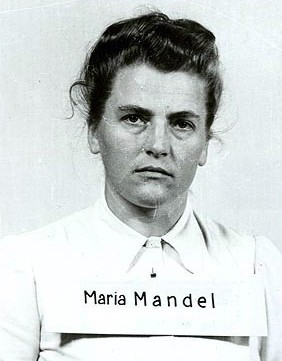
Jenny-Wanda Barkmann (1922-1946), known as the “Beautiful Specter,” was sadistic in her treatment of Stutthof prisoners ⏤ at times resulting in death. She enjoyed selecting women and children for the gas chambers. During her trial, Barkmann was disinterested and commented, “Life is indeed a pleasure, and pleasures are usually short.” She was right. Barkmann was twenty-four when she was hanged.
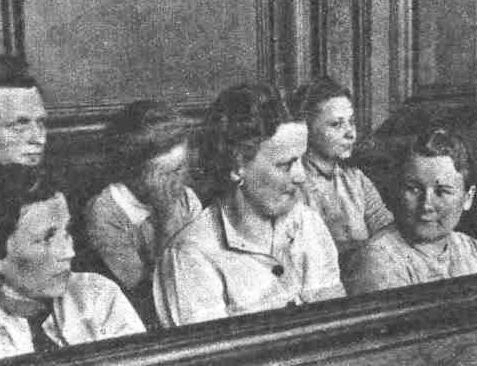
The Nuremberg Trial
On the morning of 20 November 1945 twenty one of the twenty-four main Nazi war criminals filed into Courtroom 600 to take their seats in the Nuremberg Palace of Justice. The International Military Tribunal began with the reading of the indictments against each of the defendants. So began the Nuremberg Trial which took nearly one year and consisted of 218 trial days. The trial was over on 31 August 1946 and the court adjourned for deliberation until 30 September. The verdicts against the defendants and criminal organizations took two days to read and were completed on 1 October 1946. The main trial was about bringing the first and second level enablers to bear responsibility for their actions. Other trials followed when third level enablers had to account for their wartime activities.
The Followup Trials
There were twelve “follow-up” trials held in Nuremberg between October 1946 and April 1949. The twenty-three defendants in the Doctors’ Trial (December 1946-August 1947) included SS and camp doctors, Wehrmacht medical staff, and senior officials in the Nazi health service; eight were hanged. The fourteen defendants in the Lawyers’ Trial (February 1947-December 1947) included judges, prosecutors, and high officials of the Ministry of Justice. The movie, Judgement at Nuremberg, was based on this trial. Oswald Pohl was the principle defendant in the Trial of the SS Economic and Administrative Main Office, or “The Pohl Trial” (January-November 1947). Three of the eighteen defendants were acquitted and one, Pohl, was hanged. Commanders and members of the SS mobile killing squads were put on trial in the Einsatzgruppen Trial (September 1947-April 1948). Fourteen defendants were sentenced to death; only four were hanged. The Trial of the SS Race and Settlement Main Office (July 1947-March 1948) saw officials of the SS Racial and Settlement Main Office and two other SS organizations tried for crimes against humanity, war crimes, and being members of a criminal organization (i.e., SS). Fourth level enablers were tried in the Krupp Trial and the IG Farben Trial. Regardless of sentence, all of the imprisoned former Nazis were released by 1951.
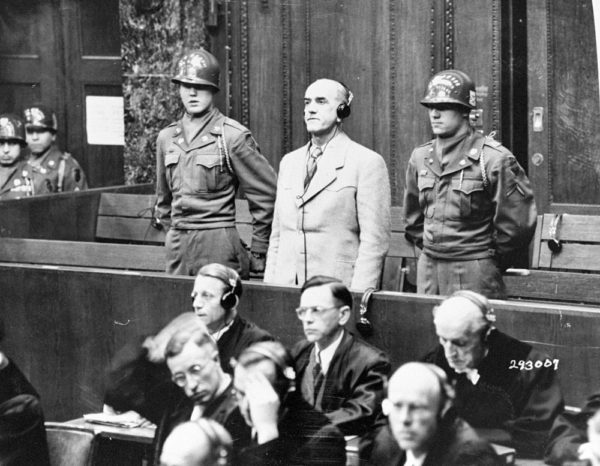
Concentration Camp Trials
In the aftermath of the war, dozens of trials were conducted in locations where the crimes were committed. There were the Dachau and Belsen trials immediately after the war, and the Frankfurt Auschwitz trials held between 1963 and 1965. Other camp trials included Ravensbrück, Sobibor (1965), Treblinka, Majdanek, and Mauthausen to name a few. Some of the war criminals were extradited to Poland where their individual crimes took place. Watch a video on the Belsen trials here.
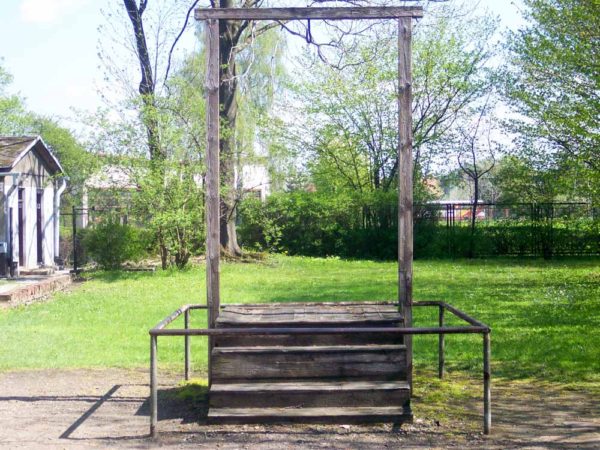
After 1950, the Cold War had grabbed the world’s attention and Nazi crimes and the prosecution of former Nazis were no longer a priority. The United States and England were protecting and using former SS men and Nazi scientists so they certainly didn’t want any further publicity that might reveal their “secrets.” It wasn’t until the early 1960s when Adolf Eichmann was caught and put on trial that the world began to have a renewed interest in the atrocities committed by the Nazis.
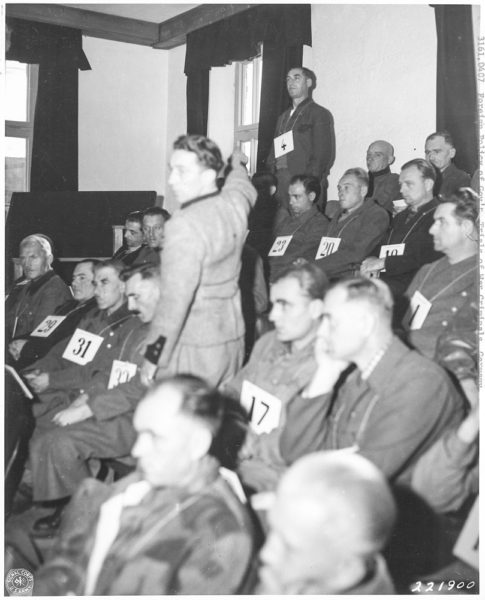
Postwar Deportations
Nazi hunters such as Simon Wiesenthal, Beate and Serge Klarsfeld, and Jens Rommel of Germany’s Central Office for the Investigation of National Socialist Crimes were dedicated to bringing Nazi criminals who escaped arrest to justice. Notable targets included Klaus Barbie (“Butcher of Lyon”), Adolf Eichmann (architect of the Final Solution), Josef Mengele (“Angel of Death”), Aloïs Brunner (Drancy internment camp commandant), Franz Stangl (commandant of Sobibór and Treblinka extermination camps), and Erich Priebke (mass murderer).
Wiesenthal tracked down Hermine Braunsteiner and obtained her extradition from the United States to West Germany where she was found guilty of murder and sentenced to life imprisonment in 1981 (she was released in 1996 and died three years later). When he knocked on her door and she looked at him, her response was, “My God, I knew this would happen. You’ve come.”
Today, it is likely we have seen the last arrests of former Nazis who are now in their mid- to late nineties.
✭ ✭ ★ Learn More About Hitler’s Enablers ✭ ★ ★
Betz, Dr. Astrid, Dr. Alexander Schmidt, and Hans-Christian Täubrich. Translation by Ulrike Seeberger and Jane Britten. Memorium Nuremberg Trials: The Exhibition. Nürnberg: Museen der Stadt Nürnberg, 2012.
Kramer, Stanley (Producer). Judgement at Nuremberg. Roxlom Films and Amber Entertainment, 1961.
Tusa, Ann and John Tusa. The Nuremberg Trial. New York: Skyhorse Publishing, 2010.
Wachsmann, Nikolaus. KL: A History of the Nazi Concentration Camps. New York: Farrar, Straus and Giroux, 2015.
I have not done justice to the entire story of the third level enablers. I can’t even say this is the tip of the iceberg. The atrocities are just too numerous to describe. It was a “man’s world” and I have not even talked about male counterparts to the female guards (for every female guard, there were ten male guards). Nor have I addressed third level enablers outside the world of SS concentration camps.
Disclaimer:
There may be a chance that after we publish this particular blog, the video links associated with the blog are no longer accessible. We have no control over this. Many times, whoever posts the video has done so without the consent of the video’s owner. In some cases, it is likely that the content is deemed unsuitable by YouTube. We apologize if you have tried to access the link and you don’t get the expected results.
What’s New With Sandy and Stew?
I’d like to give you an update on the progress of our new book, Where Did They Put the Gestapo Headquarters? A Walking Tour of Nazi Occupied Paris (1940-1944).
We have almost completed our first round of editing. I am going through the original draft of the manuscript and making the changes Carol has suggested. Roy has started to build the book and Tom is working on the map illustrations. I am trying to line up three testimonials for the back cover⏤I have one already and waiting to hear if the other two will be available.
Once I have completed the changes to the first draft, the manuscript will go to Betsy to be proofread. I have just about completed the first review of potential images. This is the process of selecting multiple images for each section. Once that is complete, Sandy and I sit down and determine exactly which images we will use in the book.
That’s about where we are at. We’re getting very close to having volume one completed and ready for all of you to read. Since it’s a walking tour of Paris, you will want to take the book when you visit Paris. Unfortunately, that may be a while but don’t let that stop you from getting the book.
Thank you to all of you who subscribe to our bi-weekly blogs. It seems there isn’t a day that goes by where we don’t increase our readership. Please let your history buff friends and family members know about our blogs.
Someone Is Commenting on Our Blogs
I’d like to thank Adelaide D. for her comments regarding the blog, The Last Train Out of Paris (click here to read the blog). She thought it was a lovely story about the Booker family and I couldn’t agree more. Adelaide also liked the image of Saint-Exupery’s bracelet that was found near the wreckage of his airplane. Thanks Adelaide and I appreciate you being such a loyal reader of our bi-weekly blogs. And again, congratulations on the first grandchild!
If there is a topic you’d like to see a blog written about, please don’t hesitate to contact me. I love hearing from you so keep those comments coming.
Why Would You Want to Buy Our Walking Through History Books?
Simple.
You like to travel and experience history and historical events. You like to see original buildings that had a significant impact on the people and events of the history you’re engaged with. You want to know the stories behind the brick and mortar in front of you.
The walking tour books are meticulously researched so you can go directly to those sites and learn about the building’s history as well as an introduction to some of the more interesting people associated with it.
We Need Your Help
Please tell your friends about our blog site and encourage them to visit and subscribe. Sandy and I are trying to increase our audience and we need your help through your friends and social media followers.
Thank You
Sandy and I appreciate you visiting with us. We have some exciting things on the horizon, and we’ll keep you updated as we go along.
Share This:
Follow Stew:
Find Stew’s books on Amazon and Apple Books.
Please contact Stew directly for purchase of books, Kindle available on Amazon. Stew.ross@Yooperpublications.com or Contact Stew on the Home Page.
Please note that we do not and will not take compensation from individuals or companies mentioned or promoted in the blogs.
 Walks Through History
Walks Through History
Copyright ©2020 Stew Ross






Good afternoon Stew, Just read your latest blog about the history of the concentration camps and some of the key organisers / camp Kommanadants. It is a chilling description of the personalities who facilitated and enabled the brutality experienced by so many prisoners in the Nazi Concentration camps. Thank you for highlighting this dark period which still impacts on so many lives; the second and third generation of the Camp Survivors.
Thank you Pat for your comments. Unfortunately, a short blog can not adequately capture the atrocities committed by the Nazis. We tend to see and define World War II within the context of the “Holocaust” and people just aren’t aware of the total crimes against humanity that the Nazis committed. Sandy and I have met many wonderful people who have dedicated their lives to ensuring others never forget. I hope my new book helps out in a small way. Say hello to your father for me. STEW
Fritz Suhren n’a pas été pendu mais fusillé car condamné par un tribunal militaire français.
Thank you Arnaud for pointing this out. For those of you who can’t read French, Arnaud is saying that Suhren was executed by a firing squad and not by hanging. The blog identifies the former Ravensbrück commandant, Fritz Suhren, having hanged after being sentenced to death. Arnaud mentioned that Suhren was executed by a firing squad since it was a French court that condemned him. There is quite a bit of conflicting information with almost all sources (including some respected historians) confirming Suhren was hanged. So, I dug a little deeper and I believe Arnaud is correct. After the war ended, the French penal code required execution by firing squad (Suhren was executed 12 June 1950). I have corrected the blog. Thanks again Arnaud for bringing this to my attention. STEW
Thank you Arnaud for your follow-up e-mail. For our readers, please note that Arnaud’s father was a witness to the execution of Fritz Suhren. First-hand knowledge trumps a historian’s inaccurate account. STEW